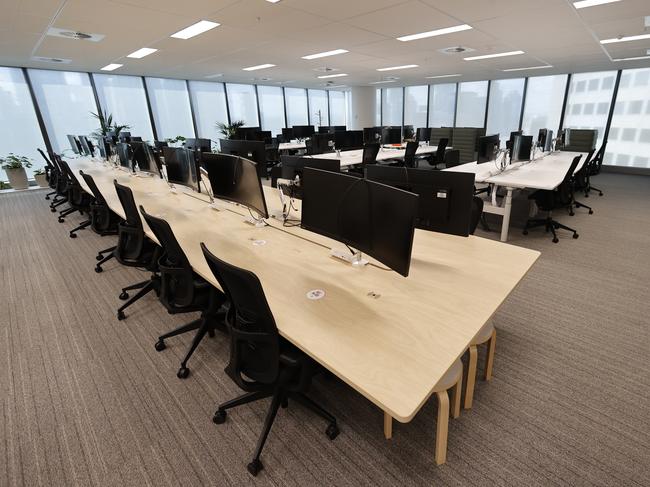Incentives for employees to return to work might include a pay rise
There are big benefits if Aussie workers return to the office — and many employers are using them to get more out of their staff.
Careers
Don't miss out on the headlines from Careers. Followed categories will be added to My News.
Getting a pay rise could be as simple as returning to the workplace.
Financial incentives are the latest weapon in the fight to get Australians back to the office, with exclusive research revealing two in five bosses would consider paying those who work on site more.
In a compromise to remote work arrangements, staff don’t even have to return full-time, with most employers happy to see workers back in the office for at least three days a week, according to the findings from global marketplace Fiverr.
As living costs continue to take their toll, free lunches are also being considered to lure staff back to business premises, the research shows.

Saving money
The high cost of living is having a direct impact on where Australians choose to work, with almost two-thirds opting to work from home to save money, ELMO Software chief executive officer Danny Lessem says.
The latest ELMO Employee Sentiment Index finds of those working remotely, 43 per cent are doing so to save on transport costs, while 30 per cent say it is because they spend more on food when in the workplace.
“We’re used to seeing people reluctant to go to the office because of the (Covid-related) health risks, but that’s all but evaporated now,” Lessem says.
“The reason that people are still keen to work from home is now monetary – it’s not health.”
Free lunch
Rewards could motivate many to return to the office, Lessem says.
ELMO’s research finds a third of those working from home would go back to the worksite for a free breakfast or a catered lunch.
Just 16 per cent of workers say nothing would encourage them back to the office more often.
“There needs to be some benefits to coming into the office which would outweigh the cost and inconvenience,” Lessem says.
“If employers gave some incentives, for example the free breakfast or lunch, it does talk to that issue around offsetting the additional costs of going into the workplace.”
Given the tax implications of a higher income, Lessem believes many workers would prefer to receive free meals or snacks over a pay rise.

Open conversation
The amount of money companies are willing to pay to get staff back to the office varies according to sector and company size, Fiverr chief human resources officer Sharon Steiner says.
But she says the research should encourage workers to have an open conversation with their employer about salary expectations.
“Make sure you have an understanding of your role, expectations and what other companies are paying individuals with similar roles,” she says.
“Be transparent with your employer on your needs. If that amount appears to be higher than what you are currently earning, back up your desired salary with research.”
Time is money

Associate Professor John Hopkins saves almost $65 each day he works from home – but he doubts offering more pay will encourage Australians back to the office.
The Swinburne University of Technology academic, who has been researching flexible and remote work practices for the past decade, says the average worker has gained an extra two hours by avoiding the office commute.
He believes this time is too highly valued to be sacrificed for a few extra dollars in pay.
Then there’s the ethical dilemma of paying less to those who work from home but are still doing the same work as their office-based colleagues, Dr Hopkins says.
“If productivity had fallen off (through remote work arrangements) then there would be justification for that but most of the organisations I speak to have maintained productivity – or even increased it,” he says.
“So if you start paying less to workers because they’re staying home, then you’re going to be going down a very slippery slope.”
Dr Hopkins, who has long practised a hybrid model of work, says staying at home saves him about $35 a day in before and after-school childcare costs, $9 in train fares and $6 to park at the train station.
He also saves on buying lunch and coffee.
“Most people have said my calculations are pretty conservative,” he says. “They would pay more for transport, fuel and parking – and even clothing, if you wear particular clothing to the office that you wouldn’t wear when working at home.
“But it’s important to mention there are also costs when working from home and, to a certain extent, the savings (made through remote work) are offset slightly in terms of utilities (such as electricity, heating and cooling).”
More Coverage
Originally published as Incentives for employees to return to work might include a pay rise




